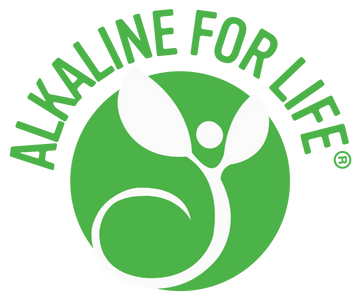
As we have detailed previously, the colorful plant flavonoid known as quercetin possesses strong anti-allergic effects protecting us from seasonal allergies and asthma. But what about food allergies? Can this anti-inflammatory, anti-oxidant powerhouse also help relieve symptoms of food allergies?
How Food Allergies Begin
Food allergies occur when incompletely digested protein leaks through the gut and gets into the bloodstream, where it is perceived as a foreign invader by the immune system. Perceiving a serious threat, your white blood cells attack and destroy this food protein fragment with harsh chemicals and histamines. These chemical compounds and histamines then circulate throughout the system creating a wide variety of symptoms.
Immune system reactions to foods can be either immediate, occurring within an hour so, or delayed, occurring up to four days later. The immediate reactions are mediated by the IgE antibody and the delayed reactions have several other pathways including IgG cell-mediated and immune complexes. It is generally the most difficult-to-digest foods that end up passing through the gut and creating food allergies. Specifically, common foods like milk, eggs, soy, wheat, peanut, tree nuts, fish, and shellfish are common causes of IgE-mediated allergic reactions. These same substances can also cause delayed “food allergic reactions,” also known as “food hypersensitivities.” (1)
Quercetin Modulates Food Allergies and Delayed Food Hypersensitivities
Quercetin is the compound that gives color to plants and protects the plants from molds, bacteria, viruses, solar radiation, and many other threats. It provides this protection due to its many life-supporting qualities such as being a strong anti-oxidant, a great natural anti-histamine, an antiviral, and a powerful immune system enhancer. (2)
- Quercetin is a potent anti-oxidant that helps control the free radical damage from the immune response. As an anti-oxidant it also stabilizes the cell membranes of the immune system.
- Quercetin is the best natural anti-histamine. It inhibits histamine release thus reducing common allergy symptoms. Many anti-allergy medications were developed to work like quercetin, but they are not as effective and have various side effects.
- Quercetin suppresses the development of inflammatory cytokines such as IL-4, IL-6, and IL-8.
- Quercetin restrains antigen-specific IgE antibody formation.
- Quercetin possesses strong antiviral activity.
- Quercetin inhibits lipoxygenase and peroxidase enzymes.
- Quercetin improves the balance of immune helper cells, Th1/Th2.
Quercetin and Peanut Allergies
Researchers in Iran (3) used a mouse model to investigate whether quercetin would be effective in controlling anaphylactic symptoms from peanut allergies.
- After sensitization with peanut extract, only 2 of 7 quercetin-treated rats developed anaphylactic symptoms, compared to all the rats in the positive control group.
- Plasma histamine levels were markedly lower in the quercetin-treated group compared with controls.
- At week 4 of the intervention, serum IgE levels were significantly lower in the quercetin-treated group.
A study from Gifu Pharmaceutical University in Japan (4) investigated the effects of quercetin and other flavonoids on a rodent model of IgE-mediated allergic reactions, much like the food allergies many of us suffer from.
- In rats, quercetin inhibited IgE-mediated histamine release as well as IgE-mediated production of TNF-alpha and IL-6. This means that the rats treated with quercetin showed less inflammation and fewer allergic symptoms characteristic of histamine.
References:
- Waserman, S., et al. 2018. IgE-mediated food allergy. Allergy, Asthma & Clinical Immunology 14(Supp. 2):55.
- Mlcek, J., et al. 2016. Quercetin and its anti-allergic immune response. Molecules 21(5):E623.
- Shishehbor, F., et al. 2010. Quercetin effectively quells peanut-induced anaphylactic reactions in the peanut sensitized rats. Iranian Journal of Allergy, Asthma, and Immunology 9(1):27-34.
- Kimata, M., et al. 2000. Effects of luteolin and other flavonoids on IgE-mediated allergic reactions. Planta Med 66(1):25-29.


